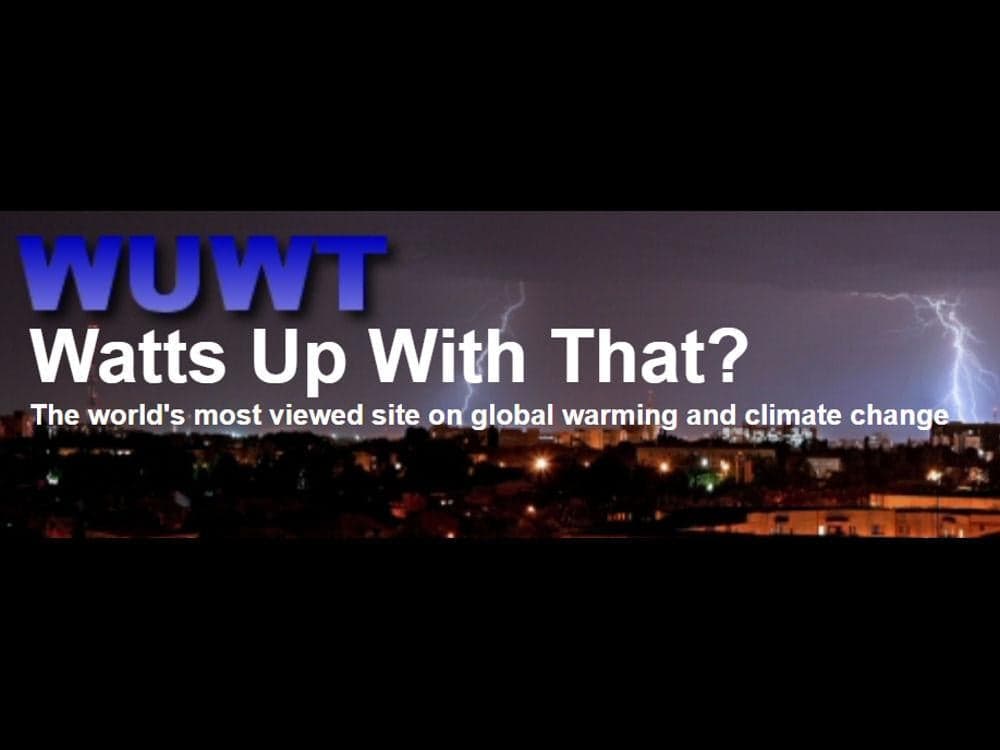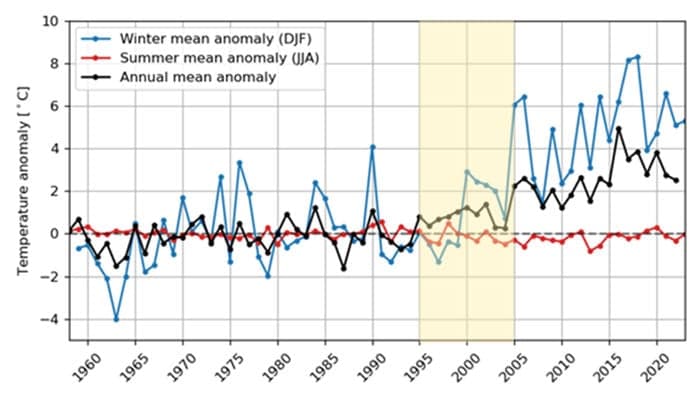From: Watts Up With That
By: Gabriel Oxenstierna
Date: June 18, 2024
For the first time, the IPCC’s doctrine of CO2 as a ‘control knob’ in our climate faces a serious challenger in the form of a comprehensive hypothesis about what drives climate and its shifts.[1][2] This article is the third in a series evaluating this new hypothesis of natural climate variability.
The Arctic [70-90°N] is a real focal point for the climate, as well as for the two competing climate hypotheses. It has warmed 3-4 times faster than the globe since 1979, and is by far the region with the highest rate of warming.[3] This phenomenon started in the late 1990s and is mainly seen during winter:

Figure 1. The AA is mainly a winter phenomenon (blue curve) in the highest latitudes, 80 – 90°N. Temperature anomalies compared to a 30-year comparison period. The ‘1997’ shift period is marked with a yellow bar. Image source: DMI
For the “Winter Gate-keeper hypothesis” [WGH], the Arctic is particularly important: The weak and sensitive polar vortex there allows for large variations in poleward heat transport that it claims regulates the climate, much like a control knob.[1, p.542] Energy is transported to the Arctic in order to get radiated from there, where radiation is as most efficient – not least due to a low green-house effect [GHE].
When heat is moved to a location where it can be more easily radiated to space, the outgoing radiation increases, leading to a reduction in the energy content of the system. Changes in transport of heat and humidity up to the Arctic explain both the strong warming trend in the Arctic and its effects on global warming, according to WGH. This is especially the case during the dark polar winter, which is why we see the pattern in figure 1. Cf. the first post in this series, here.
The Green-house Gas Forcer hypothesis says that Arctic warming primarily is caused by the increased amount of anthropogenic GHGs in the atmosphere (CO2 etc.).[5] These increase the GHE, which is assumed to cause the large temperature increase in the Arctic. The GHE-driven warming in the Arctic has even been given its own name: “Arctic Amplification” [AA]. This is IPCC’s take on the relationships: (continue reading)

